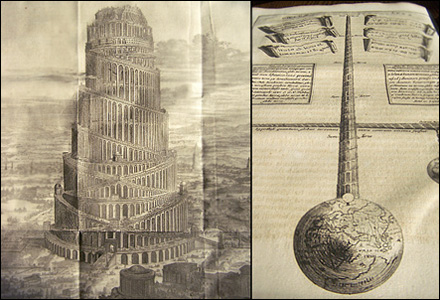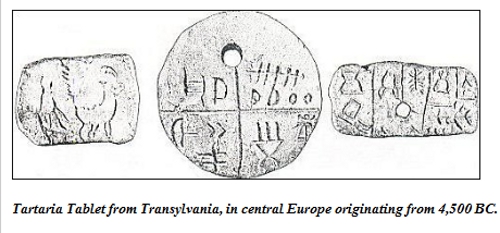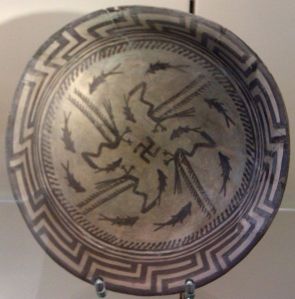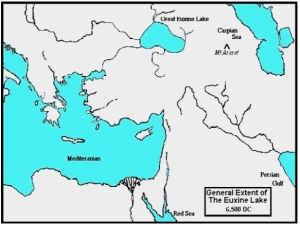__________________________________________________________________________________________
Archive for the ‘symbolism’ Category
Salvador Dali on the Human Condition
Posted in art, creativity, music, my wall, mysticism, symbolism, tagged art, fine art, music, Salvador Dali, U2 on 09/24/2012| Leave a Comment »
A Love Story – The Dark Night
Posted in History, music, my wall, mysticism, symbolism, tagged Dark Night of the Soul, faith hope and love, Loreena McKennitt, mysticism, poetry, religion, Salvador Dali, soul, spirituality, St. John of the Cross, theology on 09/24/2012| Leave a Comment »
__________________________________________________________________________
excerpt from the YouTube post:
A LOVE STORY
In what was called, the belly of the beast, John of the
Cross wisely more silent than the prophet Jonah,
dealt not with men but with God alone, waiting
patiently for a divine answer that would end the dark
night of his soul.
In the end; The Religion that would Police him could
not disturb the ecstasy of one who had been carried
so far into the light that he was no longer troubled at
the thought of being rejected even by those who
would hold themselves up to the world as being Holy!
No one can become a saint without solving the
problem of suffering. No one who has ever written
anything, outside the pages of Scripture, and no one
has given us such a solution to the problem as St.
John of the Cross.
In the end they consciously did everything they could
to remove St. John of the Cross from a position in
which he would be able to defend what he knew to be
true.
While sanctity alone is perhaps the living solution of
the problem of suffering. Still suffering continues to
be suffering; But it can cease to be an obstacle in our
life, and to our mission or our happiness, in which we
can find refuge positively and concretely in faith, hope
and love.
John of the Cross does not reveal when or how his
answer came, but when John of the Cross made his
miraculous escape during the octave of the
Assumption, in 1578, he carried in his pocket the
manuscript of a poem which critics have declared to
be far superior to any other in the Spanish language,
if not the world. The writings of John of the Cross
during his dark night of the soul.
In total darkness John of the Cross finds only light, in
cold only warmth, in desperation only Hope, in Hope
only Faith, in Faith only Love. Love being greatest of
all. Stronger than Fear. Stronger than Evil. Love – The
ultimate Protector. Love – The ultimate Motivator.
Love – The ultimate Weapon.
*****
John of The Cross
O Living flame of love
That, burning, dost assail
My inmost soul with tenderness untold,
Since thou dost freely move,
Deign to consume the veil
Which sunders this sweet converse that we hold …
And O, ye lamps of fire,
In whose resplendent light
The deepest caverns where the senses meet,
Erst steeped in darkness dire,
Blaze with new glories bright
And to the loved one give both light and heat!
*****
The Christ of St John of The Cross is the first of two extraordinary crucifixions painted by Dali in the early 1950s. In a cosmic dream the secret of Christ is revealed. This later confirmed by a drawing of the crucified Christ by St John of the Cross, the 16th-century Spanish mystic, in which Dali discovers a triangle (Trinity) nested inside of a circle (of life).
*****
Music – Loreena McKenitt
Title – The Dark Night of the Soul
Lyrics – Loreena McKennitt – John of the Cross
Art – Salvidor Dali – “The Christ of Saint John of the
Cross”
Video – Clover Studio
Salvador Dali’s St. John of the Cross
Posted in my wall, mysticism, symbolism, tagged music, mysticism, Salvador Dali, St. John of the Cross on 09/24/2012| Leave a Comment »
________________________________________________________________________________________
The Christ of St John of The Cross is the first of two extraordinary crucifixions painted by Dali in the early 1950s.It depicts Jesus Christ on the cross in a darkened sky floating over a body of water complete with a boat and fishermen. Although a crucifixion, it is devoid of nails, blood, and a crown of thorns, because, according to Dalí, he was convinced by a dream that these features would mar his depiction of Christ. His depiction of the crucified Christ, is later confirmed when Dali discovers a drawing
by St John of the Cross, a 16th-century Spanish mystic, of a triangle (Trinity) nested inside of a circle (of life). Dali’s composition is also based on a triangle and circle (the triangle is formed by Christ’s arms; the circle is formed by Christ’s head). The triangle, since it has three sides, can be seen as a reference to the Trinity. Dali explained, “In the first place, in 1950, I had a ‘cosmic dream’ in which I saw this image in colour and which in my dream represented the ‘nucleus of the atom.’ This nucleus later took on a metaphysical sense; I considered it ‘the very unity of the universe,’ the Christ!”_______________________________________________________________________________________________________
Of all of the human conditions, it is probably hardest to explain why God would allow suffering. Yet it is often suffering, and not enjoyment, which brings the soul away from the distractions of life, to focus on it’s relationship to God.Born in Spain in 1542, St. John of the Cross learned the importance of self-sacrificing love from his parents. His father gave up wealth, status, and comfort when he married a weaver’s daughter and was disowned by his noble family. After his father died, his mother kept the destitute family together as they wandered homeless in search of work. These were the examples of sacrifice that John followed with his own great love — God.
When the family finally found work, John still went hungry in the middle of the wealthiest city in Spain. At fourteen, John took a job caring for hospital patients who suffered from incurable diseases and madness. It was out of this poverty and suffering, that John learned to search for beauty and happiness not in the world, but in God.
After John joined the Carmelite order, Saint Teresa of Avila asked him to help her reform movement. John supported her belief that the order should return to its life of prayer. But many Carmelites felt threatened by this reform, and some members of John’s own order kidnapped him. He was locked in a cell six feet by ten feet and beaten three times a week by the monks. There was only one tiny window high up near the ceiling. Yet in that unbearable dark, cold, and desolation, his love and faith were like fireand light. He had nothing left but God — and God brought John his greatest joys in that tiny cell.
After nine months, John escaped by unscrewing the lock on his door and creeping past the guard. Taking only the mystical poetry he had written in his cell, he climbed out a window using a rope made of strips of blankets. With no idea where he was, he followed a dog to civilization. He hid from pursuers in a convent infirmary where he read his poetry to the nuns. From then on his life was devoted to sharing and explaining his experience of God’s love.
His life of poverty and persecution could have produced a bitter cynic. Instead it gave birth to a compassionate mystic, who lived by the beliefs that “Who has ever seen people persuaded to love God by harshness?” and “Where there is no love, put love — and you will find love.” — excerpt
In fact, the importance of the cross in the life of the true Christian disciple became St. John’s maxim: “Do not seek Christ without the cross.” For St. John, innocent and voluntary suffering embraced in the way of the cross becomes an avenue to sublime intimacy with the Risen Lord. Therefore, suffering with the Savior is one key to the lofty heights of contemplation, which opens the door to the loving embrace of the Holy Spirit, transforming pain into unheard-of joy. While such a concept is quite foreign to contemporary society, it is entirely compatible with the Gospel. – excerpt
Legend of St. Eustace
Posted in History, legend, my wall, sacred spaces, symbolism, tagged Athanasius Kircher, Eustace, Jagermeister, saint, Santuario della Mentorella, stag on 08/04/2012| 1 Comment »
Saint Eustace, also known as Eustachius or Eustathius, was a legendary Christian martyr who lived in the 2nd century AD. Prior to his conversion to Christianity, Eustace was a Roman general named Placidus, who served the emperor Trajan. While hunting a stag in Tivoli near Rome, Placidus saw a vision of Jesus between the stag’s antlers. He was immediately converted, had himself and his family baptized, and changed his name to Eustace (Greek: Ευστάθιος Eustathios, “well stable”, or Ευστάχιος, Eustachios, “rich crop”).
A series of calamities followed to test his faith: his wealth was stolen; his servants died of a plague; when the family took a sea voyage, the ship’s captain kidnapped Eustace’s wife Theopista; and as Eustace crossed a river with his two sons Agapius and Theopistus, the children were taken away by a wolf and a lion. Like Job, Eustace lamented but did not lose his faith.
He was then quickly restored to his former prestige and reunited with his family; but when he demonstrated his new faith by refusing to make a pagan sacrifice, the emperor, Hadrian, condemned Eustace, his wife, and his sons to be roasted to death inside a bronze statue of a bull or an ox, in the year AD 118.
The saint is honored on the calendar of the Melkite Catholics on December 13, as the “Commemoration of the Holy Martyrs Eustrates, Auxentius, Eugene, Mardarius, Orestes and the Virgin Lucia.” He is also commemorated in the Orthodox Church, on September 20. The d’Afflitto dynasty, one of the oldest princely families in Italy, claims to be the direct descendant of Saint Eustace.
 He is one of the patron saints of Madrid, Spain. Scenes from the story, especially Eustace kneeling before the stag, became a popular subject of medieval religious art. Early artistic depictions of the legend include a wall painting at Canterbury Cathedral and stained glass windows at the Cathedral of Chartres. There is a Church of Saint Eustace in Paris. And the island of Sint Eustatius in the Caribbean Netherlands is named after him.
He is one of the patron saints of Madrid, Spain. Scenes from the story, especially Eustace kneeling before the stag, became a popular subject of medieval religious art. Early artistic depictions of the legend include a wall painting at Canterbury Cathedral and stained glass windows at the Cathedral of Chartres. There is a Church of Saint Eustace in Paris. And the island of Sint Eustatius in the Caribbean Netherlands is named after him.
Probably the saint is currently best known for his cross-and-stag symbol being featured on bottles of Jägermeister. This is related to his status as patron of hunters; jägermeisters were senior foresters and gamekeepers in the German civil service at the time of the drink’s introduction in 1935.
In 1661, Kircher discovered the ruins of a church said to have been constructed by Constantine on the site of Saint Eustace’s vision of Jesus Christ in a stag’s horns. He raised money to pay for the church’s reconstruction as the Santuario della Mentorella, and his heart was buried in the church on his death.
Turris Babel
Posted in ancient technology, architecture, art, language, my wall, mythology, symbolism, tagged architecture, Athanasius Kircher, serendipity, tower, Tower of Babel, Ultima Tower on 08/04/2012| Leave a Comment »
_________________________________________________________________________
I love serendipity!
I arrove at this image circuitously. As I had mentioned, in a much previous post, I had been searching to find the “blowing wind face” frequent on antiquated maps of the world. I finally did, and one of those maps I discovered, was drawn by Athanasius Kircher.
Like Leonardo da Vinci, the German scholar Athanasius Kircher (ca. 1601-1680) was a true “Renaissance man.” Interested in both the arts and sciences, he wrote several dozen books on everything from medicine and geology to Egypt, cryptography, Noah’s Ark, and musical harmony. Kircher was especially interested in the history of languages, and just a year before his death, he published Turris Babel, a history of the Tower of Babel.
According to the Bible, the people of Babylon attempted to build a huge tower that would reach all the way to heaven. After learning that they were constructing the tower for their own glory rather than His, however, God punished the Babylonians by making them all speak different languages. No longer able to communicate with each other, they stopped work on the tower, left Babylon, and went their separate ways. The tower not only became a symbol for human pride, but also helped explain the origin of languages.
In Turris Babel, Kircher suggested that rather than creating hundreds of languages at one stroke, God preserved Hebrew, which continued to be spoken by the descendants of Noah’s son Shem, and then created four new languages, which he assigned to the descendants of Noah’s other sons. These languages subsequently split apart even further over time, resulting in all the languages that are spoken today. Kircher singled out a few languages for special attention in the second half of his book. Considered the father of Egyptology, he was especially interested in Egyptian hieroglyphics, and he expands on one of his earlier works on this subject here.
lib.lsu.edu | Tower of Babel
I found the discovery that Kircher had illustrated the Tower of Babel as well, interesting in light of my recent posting also about the X-Seed 4000 Ultima Tower being designed right now, at two miles high, the largest human-built structure the world has ever seen.
Ey’wa
Posted in culture, language, symbolism, tagged Cherokee, Gaelic, key, language, Na'vi, sacred geometry, semiotics, symbolism, writing on 08/03/2012| Leave a Comment »
I don’t know why, but I’ve always found visual depictions of language and texts interesting. I loved the illuminated manuscripts of the celts, such as The Book of Kells. It’s not so often the text itself, as the decorations surrounding it which seem to tell a story of its own, in pictures. Taking a closer look at the designs and symbols is almost like decoding a cipher.  Making comparisons between the objects depicted, whether carvings in stone, or embossed metalwork, or painted on walls or paper the transmission of culture and ideas between peoples is often documented and codeified. The understanding of a people and a written language might require the discovery of a Rosetta Stone, however. And the deciphering of symbols and diagrams likewise requires a key the viewer may not possess, although the fascination with them persists. Spoken language reveals similarities in words that sound alike although are spelled differently in each culture.
Making comparisons between the objects depicted, whether carvings in stone, or embossed metalwork, or painted on walls or paper the transmission of culture and ideas between peoples is often documented and codeified. The understanding of a people and a written language might require the discovery of a Rosetta Stone, however. And the deciphering of symbols and diagrams likewise requires a key the viewer may not possess, although the fascination with them persists. Spoken language reveals similarities in words that sound alike although are spelled differently in each culture.
 This shows how languages could variously be transformed with old tribes confluence with new peoples as they migrated across continents, and symbols likewise be transformed by small variations and adaptations to other peoples’ ideas. For example, in the movie Avatar, the indiginous natives are said to worship the god Ey’wa. Ey’wa is two syllables similar in sound to the term Yahweh, written as four letters without vowels YHWH, and called the Tetragrammaton. Interestingly, Native Americans had a similar word for their god, and also use a term like “Elohim” in their spoken version of The Lord’s Prayer. Although it certainly sounds like the basis for theNa’vi language, it sounds like Chinese to me.
This shows how languages could variously be transformed with old tribes confluence with new peoples as they migrated across continents, and symbols likewise be transformed by small variations and adaptations to other peoples’ ideas. For example, in the movie Avatar, the indiginous natives are said to worship the god Ey’wa. Ey’wa is two syllables similar in sound to the term Yahweh, written as four letters without vowels YHWH, and called the Tetragrammaton. Interestingly, Native Americans had a similar word for their god, and also use a term like “Elohim” in their spoken version of The Lord’s Prayer. Although it certainly sounds like the basis for theNa’vi language, it sounds like Chinese to me._________________________________________________________________________________

________________________________________________________________________
And further proving that sometimes even {olde} English can be unintelligible in the native tongue, here is the same Lord’s Prayer in Gaelic.











